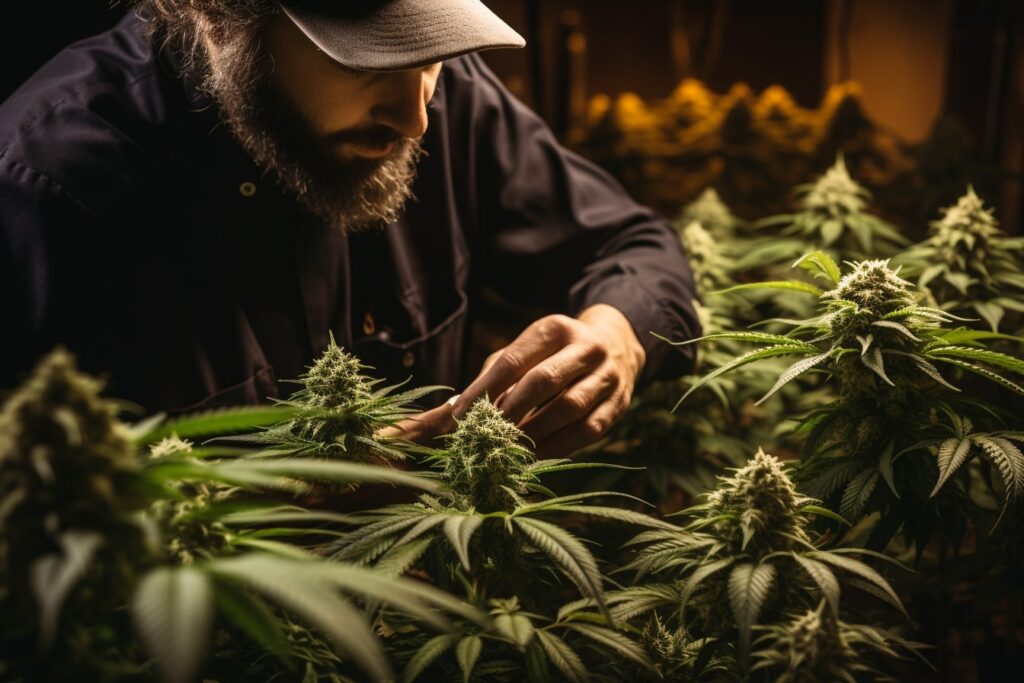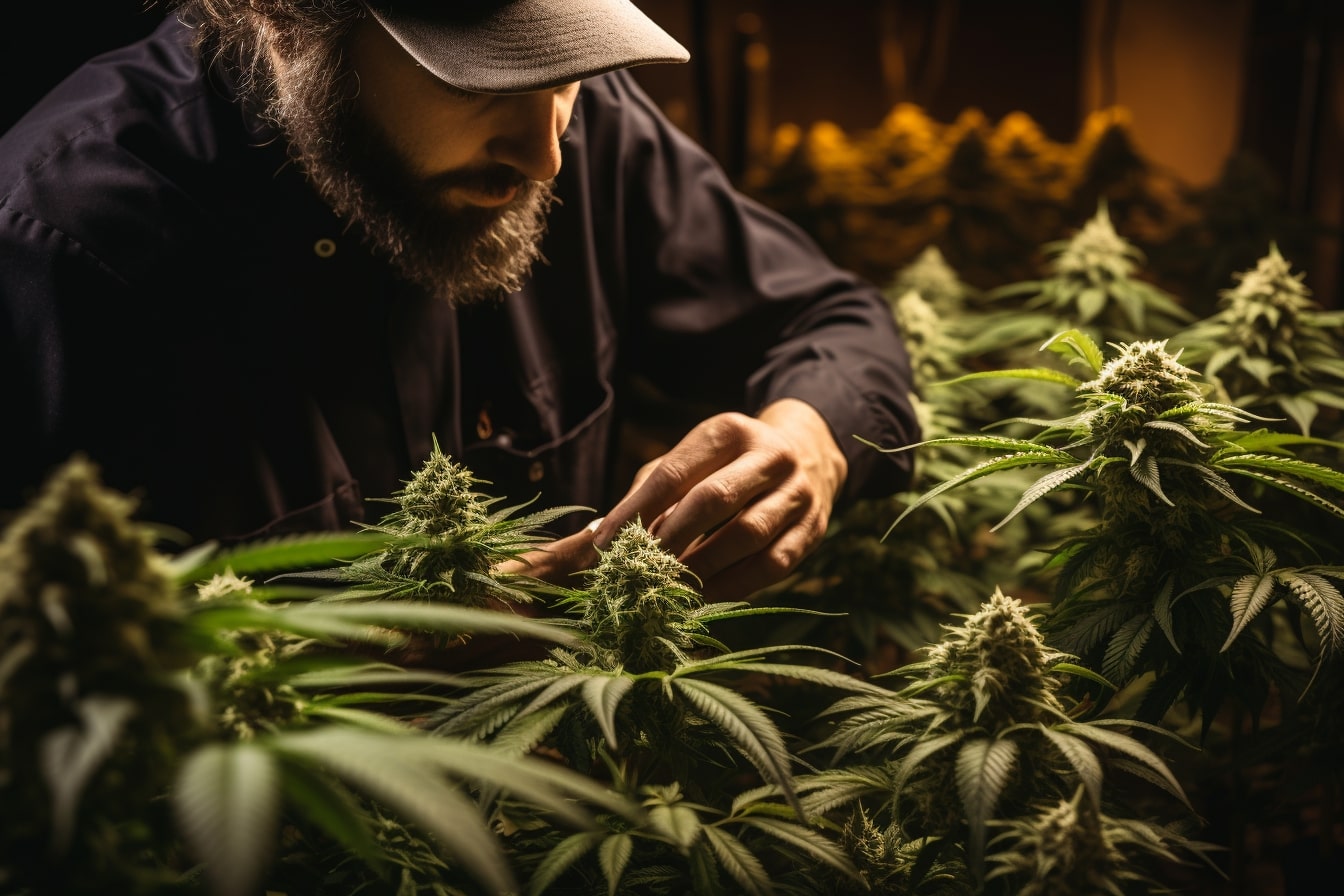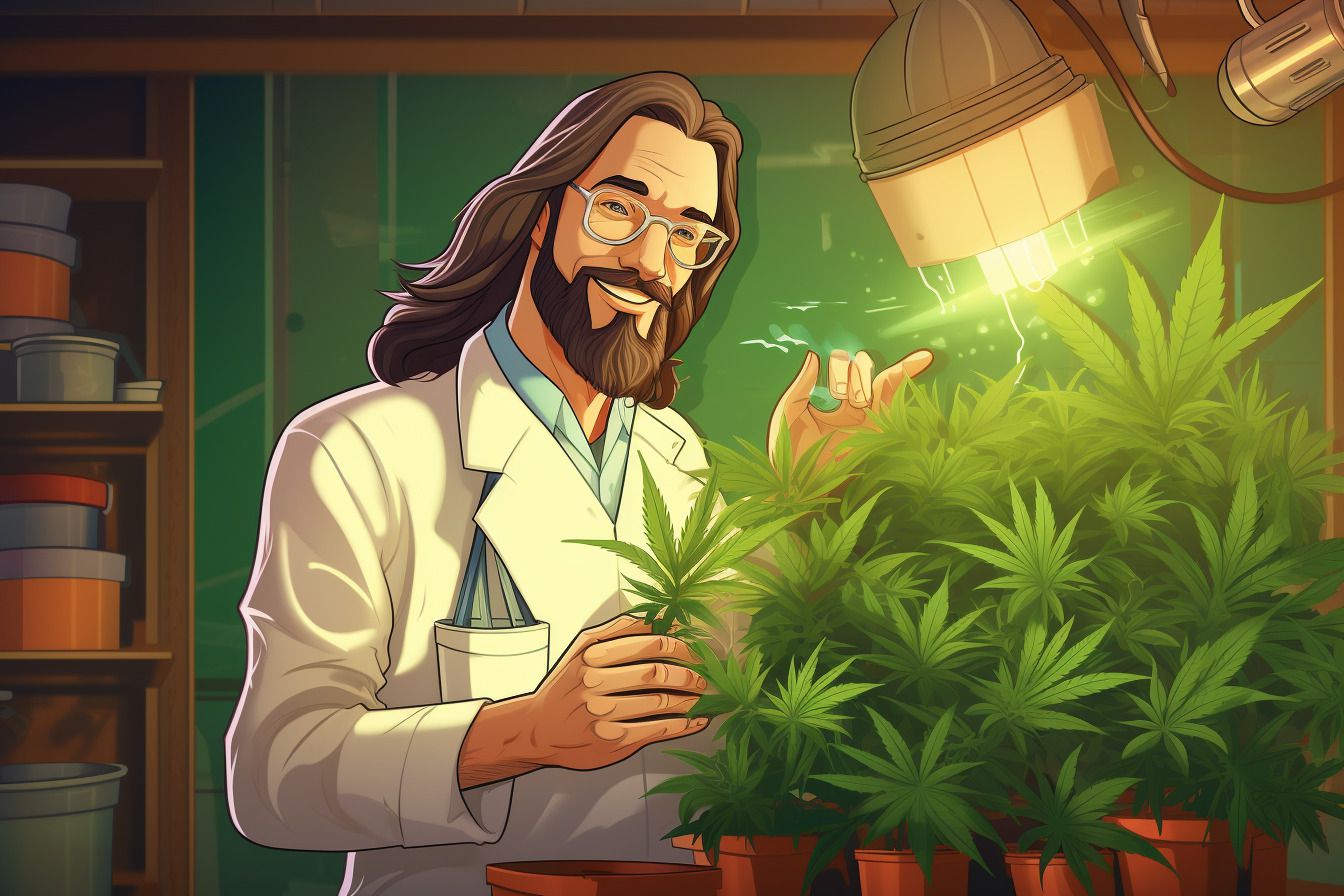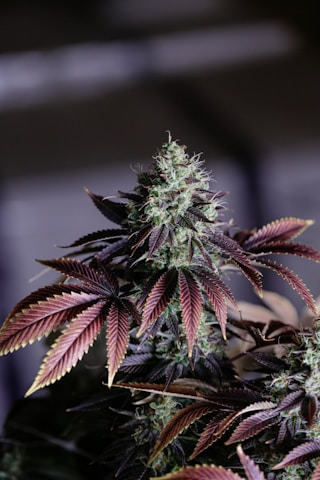
That’s where Johnny Ganja comes in. Our mission is to create a community of passionate growers who can share their knowledge, tips, and experiences with one another. We aim to provide a casual, friendly, and informative space for both experienced and novice cannabis growers to thrive. Whether it’s learning about the different types of cannabis seeds or finding the best growing method for your needs, our team is here to help every step of the way. So, let’s dive into the exciting world of cannabis cultivation and help you start growing your first plant successfully!
Types of Cannabis Seeds
Photoperiod Seeds
Photoperiod seeds are the classic cannabis seeds that most growers are familiar with. They require a specific light cycle to trigger their transition from the vegetative to the flowering stage. Let’s explore the pros and cons of growing photoperiod seeds.
Pros: Photoperiod seeds tend to produce larger plants with higher yields. They also allow for more control over the growth cycle, making them ideal for experienced growers looking to optimize their harvest.
Cons: The light cycle requirement can make photoperiod seeds more challenging for beginners. They also have a longer overall growth period, which means it takes more time before you can enjoy the fruits of your labor.
Some beginner-friendly photoperiod strains include Northern Lights, Blue Dream, and White Widow.
Autoflowering Seeds
Autoflowering seeds are a popular choice for beginners due to their simplicity and speed. These seeds automatically transition from the vegetative to the flowering stage without the need for specific light cycles. Let’s weigh the pros and cons of growing autoflowering seeds.
Pros: Autoflowering seeds are low-maintenance, making them perfect for beginners. They also have a shorter growth cycle, allowing you to enjoy your harvest sooner.
Cons: Autoflowering plants tend to be smaller in size, which can result in lower yields. They also have less room for error during the growth process, so any mistakes or setbacks can impact the final product more significantly.
Some beginner-friendly autoflowering strains include Auto Blueberry, Auto Northern Lights, and Auto AK-47.
Feminized Seeds
Feminized seeds are bred to produce only female plants, ensuring a higher likelihood of usable buds for harvest. Here are the pros and cons of growing feminized seeds.
Pros: Growing feminized seeds eliminates the need to identify and remove male plants, saving time and effort. They also guarantee a harvestable crop, making them a popular choice for many growers.
Cons: Feminized seeds can be more expensive than other types of seeds. They also don’t allow for natural breeding or genetic diversity within your crop.
Some beginner-friendly feminized strains include Gorilla Glue #4, Girl Scout Cookies, and Sour Diesel.
Choosing Your Growing Method
Indoor Growing
Indoor growing allows for greater control over the environment, but it requires more equipment and investment. Let’s discuss the advantages and disadvantages of indoor growing, as well as the necessary equipment and environment.
Advantages: Indoor growing offers precise control over temperature, humidity, and light, resulting in healthier plants and higher yields. It also allows for year-round cultivation and protection from pests and harsh weather conditions.
Disadvantages: Indoor growing requires a significant investment in equipment, such as grow lights, ventilation systems, and climate control devices. It can also result in higher energy consumption and requires more space.
Essential equipment for indoor growing includes grow lights, pots, soil or hydroponic systems, ventilation systems, and climate control devices like humidifiers and heaters.
Read: Indoor cannabis grow guide
Outdoor Growing
Outdoor growing relies on natural sunlight and conditions, making it a more affordable option. Let’s explore the advantages and disadvantages of outdoor growing and the factors to consider when choosing a location.
Advantages: Outdoor growing requires less equipment and investment compared to indoor growing. It also allows plants to grow larger, potentially resulting in higher yields.
Disadvantages: Outdoor growing offers less control over environmental factors, making plants more susceptible to pests, diseases, and weather conditions. It also limits the growing season to the warmer months of the year.
Factors to consider when choosing a location for outdoor growing include sunlight exposure, local climate, and access to water.
Read: Advantages of growing cannabis outdoors
Greenhouse Growing
Greenhouse growing combines elements of both indoor and outdoor growing methods. Let’s discuss the advantages and disadvantages of greenhouse growing and tips for setting up a successful greenhouse.
Advantages: Greenhouse growing provides some environmental control, like indoor growing, while still utilizing natural sunlight. It also offers protection from pests and weather conditions, and can extend the growing season.
Disadvantages: Greenhouse growing can require a significant initial investment in the structure itself, as well as ongoing maintenance costs.
Tips for setting up a successful greenhouse include proper ventilation, temperature and humidity control, and ensuring adequate sunlight exposure for your plants.
Cannabis Cultivation Essentials
Soil and Nutrients
High-quality soil and nutrients are crucial for healthy cannabis plant growth. Let’s discuss the importance of soil quality and compare organic and synthetic nutrients.
The Importance of High-Quality Soil: Good soil provides the necessary nutrients, aeration, and water retention for optimal cannabis growth. High-quality soil will result in stronger plants, better yields, and more potent buds.
Organic vs. Synthetic Nutrients: Organic nutrients come from natural sources and can improve soil quality, while synthetic nutrients are chemically manufactured. Organic nutrients are generally preferred for their benefits to the soil, plant health, and overall flavor and aroma of the buds. Synthetic nutrients can provide faster growth and higher yields but may negatively impact the soil and the final product’s taste and smell.
Read: Cultivating cannabis in soil
Light
Light is essential for cannabis growth and development. Let’s explore the types of grow lights for indoor growing and how to maximize sunlight for outdoor growing.
Types of Grow Lights for Indoor Growing: There are several types of grow lights available for indoor cultivation, including High-Intensity Discharge (HID) lights, Light Emitting Diodes (LEDs), and Compact Fluorescent Lights (CFLs). Each type has its advantages and disadvantages, with LEDs becoming increasingly popular for their energy efficiency and longevity.
Maximizing Sunlight for Outdoor Growing: For outdoor growing, it’s crucial to choose a location with ample sunlight exposure. Southern-facing slopes and areas with minimal shade are ideal. Keep in mind that the sun’s position changes throughout the growing season, so monitor and adjust your plants accordingly.
Read: Guide to LED lights for growing cannabis
Water
Proper watering is essential for healthy cannabis growth. Let’s discuss proper watering techniques and signs of overwatering or underwatering.
Proper Watering Techniques: Cannabis plants should be watered deeply and infrequently, allowing the soil to dry out slightly between waterings. This encourages deep root growth and prevents overwatering. Be sure to use well-draining soil to avoid waterlogged roots.
Signs of Overwatering or Underwatering: Overwatered plants may exhibit yellowing leaves, drooping, or root rot. Underwatered plants often have dry, brittle leaves and slow growth. Monitor your plants closely and adjust your watering schedule as needed.
Air Circulation and Temperature
Proper air circulation and temperature control are vital for maintaining a healthy cannabis growing environment. Let’s discuss the importance of ventilation and maintaining ideal temperature and humidity levels.
The Importance of Ventilation: Adequate air circulation helps prevent mold, pests, and diseases, and ensures that plants receive enough carbon dioxide for photosynthesis. Make sure to use fans or vents to maintain proper airflow in your growing area.
Maintaining Ideal Temperature and Humidity Levels: Cannabis plants thrive in temperatures between 70-85°F (21-29°C) during the day and 60-70°F (15-21°C) at night. Humidity levels should be kept between 40-60% during the vegetative stage and 40-50% during the flowering stage. Use climate control devices like humidifiers, dehumidifiers, and heaters to maintain optimal conditions for your plants.
Read: The light requirements of the cannabis plant
The Growing Process
Germination
Germination is the first step in the cannabis growing process. Let’s discuss the methods for germinating cannabis seeds and the signs of successful germination.
Methods for Germinating Cannabis Seeds: Common methods for germinating cannabis seeds include the paper towel method, direct soil planting, and using germination plugs or starter cubes. Each method has its advantages and disadvantages, so choose the one that best suits your needs and experience level.
Signs of Successful Germination: A successfully germinated seed will produce a small white taproot, which will grow and eventually break through the soil surface as a seedling. This process typically takes 3-7 days, depending on the method used and the seed’s viability.
Vegetative Stage
The vegetative stage is when cannabis plants focus on developing strong roots, stems, and foliage. Let’s discuss how to encourage healthy growth during the vegetative stage and address common issues.
How to Encourage Healthy Growth: During the vegetative stage, provide your cannabis plants with ample light (18-24 hours per day for indoor growing), consistent temperatures, and proper nutrients. Regularly check for signs of pests or diseases and address any issues promptly.
Common Issues and How to Address Them: Some common issues during the vegetative stage include nutrient deficiencies, pests, and diseases. To address nutrient deficiencies, adjust your feeding schedule and ensure you are using the correct nutrients for your plants’ growth stage. For pests and diseases, use preventative measures like proper ventilation and cleanliness, and treat any issues with appropriate organic or chemical treatments.
Flowering Stage
The flowering stage is when cannabis plants produce buds, which contain the cannabinoids and terpenes we all enjoy. Let’s discuss identifying the transition to the flowering stage and optimizing bud development.
Identifying the Transition to the Flowering Stage: Cannabis plants will enter the flowering stage in response to a change in light exposure (for photoperiod seeds) or age (for autoflowering seeds). Signs of the flowering stage include the appearance of small white hairs (pistils) at the nodes and a change in growth pattern, with plants focusing more on bud development than foliage growth.
Tips for Optimizing Bud Development: To optimize bud development during the flowering stage, ensure your plants receive the correct light exposure for their type (12 hours on/12 hours off for photoperiod seeds, or consistent light for autoflowering seeds). Adjust your nutrient regimen to focus on phosphorus and potassium, and maintain proper temperature and humidity levels. Regularly check for pests, diseases, and signs of nutrient deficiencies to address any issues promptly.
Harvesting and Curing
Proper harvesting and curing techniques are essential for ensuring the best possible potency and flavor of your cannabis buds. Let’s discuss determining when to harvest and the proper drying and curing techniques.
Determining When to Harvest: The optimal time to harvest your cannabis plants is when the trichomes (the small, crystal-like structures on the buds) have turned from clear to a milky white or amber color. This indicates peak cannabinoid content. Additionally, you can monitor the color of the pistils, with most strains being ready for harvest when around 70-80% of the pistils have turned brown or red.
Proper Drying and Curing Techniques: To dry your harvested buds, hang them upside down in a dark, well-ventilated room with temperatures between 60-70°F (15-21°C) and humidity levels around 50%. Allow them to dry for 7-14 days or until the stems snap when bent. To cure your dried buds, place them in airtight glass jars and store them in a dark, cool environment. Open the jars daily for the first week or two to release built-up moisture, then reduce the frequency to once every few days. Curing typically takes 2-4 weeks, but can continue for several months for optimal flavor and potency.
Troubleshooting Common Growing Issues
Pests and Diseases
Pests and diseases can cause significant damage to your cannabis plants if left untreated. Let’s discuss identifying common pests and diseases and the prevention and treatment methods available.
Identifying Common Pests and Diseases: Common cannabis pests include spider mites, aphids, and whiteflies, while common diseases include powdery mildew, bud rot, and root rot. Signs of pests and diseases vary but often include discoloration, curling or wilting leaves, and visible insects or mold on the plants.
Prevention and Treatment Methods: Preventing pests and diseases often involves proper ventilation, cleanliness, and regular monitoring of your plants. Treatment methods depend on the specific pest or disease, with options including organic remedies like neem oil or more aggressive chemical treatments. Be sure to research and choose the most appropriate treatment for your situation.
Nutrient Deficiencies and Imbalances
Nutrient deficiencies and imbalances can negatively impact cannabis plant growth and yield. Let’s discuss how to identify signs of nutrient issues and how to correct and prevent nutrient problems.
Identifying Signs of Nutrient Issues: Signs of nutrient deficiencies or imbalances often include discolored, yellowing, or curling leaves, stunted growth, and weak stems. Each nutrient deficiency has specific symptoms, so it’s essential to research and correctly identify the issue.
How to Correct and Prevent Nutrient Problems: To correct nutrient deficiencies, adjust your feeding schedule and ensure you are using the correct nutrients for your plants’ growth stage. To prevent future issues, monitor your plants closely, maintain proper pH levels in your growing medium, and avoid overwatering or underwatering. Regularly testing and adjusting your nutrient solution can also help prevent nutrient imbalances.
Conclusion
Understanding the basics of cannabis cultivation is crucial for any beginner looking to grow their first plant successfully. From choosing the right type of seed to providing the proper care throughout the growing process, a solid foundation of knowledge is key to a rewarding growing experience.
So, go ahead and embark on your cannabis growing journey with confidence, knowing that you have the essential information to nurture your plants and reap the benefits of your hard work. And remember, the Johnny Ganja community is here to support you with expert advice, tips, and a shared passion for all things cannabis. Together, let’s cultivate a world where everyone can enjoy the remarkable benefits of this incredible plant!







